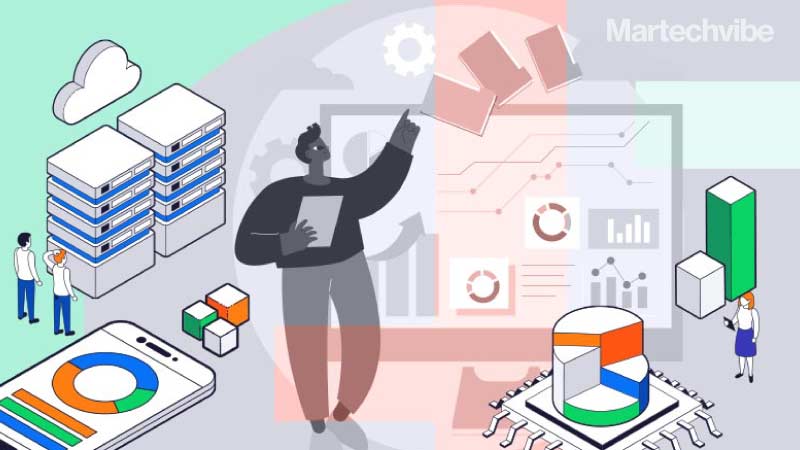Do You Need an MDM for Customer Data If You Have a CDP?
Find out how CDPs help create a centralised database by bringing together data from every customer touch point, consolidating & activate data for better CX & higher ROI. Make the best choice for your organisation.
What to Read Next
- Cvent to Acquire ON24 for $400 Million
- MobiLoud Unveils AI-Powered Analytics Dashboard for Mobile App Insights
- Avaya Chooses Gemini Enterprise & Google Workspace to Power AI Strategy
- Optimove Launches New Email Marketing Solution
- iMini AI Integrates Kling 2.5 Turbo & Wan 2.6 for Next-Gen AI Video Creation

In today’s digital landscape, data is everywhere, filtered to you through multiple tools, channels and platforms. With so many data management systems available, enterprises have started to feel the challenge of identifying the ideal stack and technology system that can help activate their customer data and turn it into a means for better customer experience, delivery, and higher revenue.
For marketers and business growth leaders, a Customer Data Platform should come with the ability to process the customer data and interactions in real-time to hyper-focussed cohorts. Further, the same system should be able to deliver means to process the refined data to drive personalisation, analytics, targeting, etc.
The current systems in the market that help process data in such a fashion are the Customer Data Platform (CDP) and Master Data Platform (MDM). Which platform works best for your organisation?
What is a CDP?
A CDP is a software solution that helps create a centralised database by bringing together data from every customer touch point, which is further consolidated and activated so that enterprises can deliver a better customer experience (CX) while achieving higher ROI on each marketing spend.
Customer data platforms are designed from the ground up to easily integrate with the rest of your technology stack through application programming interfaces (APIs). This allows CDPs to function as a smart hub, making your technology stack more agile, flexible and scalable by allowing you to plug in the best-of-breed software for your particular industry and applications.
Using a CDP, a brand can capture every interaction their customer has had with them, either online or offline, anonymous or Identified – thus stitching together an interaction history that helps marketers build a 360-degree view of each of their customers and prospects
What does a CDP do?
Simply put, A CDP ingests customer data from different sources to target ads and create personalised communication.
Combining structured and unstructured data: A CDP can ingest data from any source, including email, social media, loyalty, and systems like enterprise resource planning (ERP), customer relationship management (CRM) and data management platforms (DMPs). Customer data platforms can analyse and segment customer profiles using rules or machine learning, perform predictive scoring, and provide customer journey orchestration.
Data activation: It allows both push-out and pull-in data. Allowing campaign management from within a single dashboard. Further, CDPs allow marketers to apply advanced personalisation, identify and segment key target audiences, provide relevant product and content recommendations, and implement retargeting programs.
Identity building: CDPs use hybrid, probabilistic, and/ or deterministic means, in addition to ML models, to build or resolve customer identities. This allows marketers to tailor their communications and build lasting customer relationships, improving retention rates and lowering churn.
What is an MDM?
MDM (Master Data Management), is “a technology-enabled discipline in which business and IT work together to ensure the uniformity, accuracy, stewardship, semantic consistency and accountability of the enterprise’s official shared master data assets.”
MDM is more generic and wide-ranging in its use cases. It provides enterprises with means to manage external data – i.e. from sources such as CRM, ERP systems, customer data and more; and internal data – like the information of your employees, supply-chain management, and inventory management systems.
MDM as a tool is not designed for Data activation and thus lacks the agility required by teams such as marketing, sales etc., who deal with customer data daily.
What does an MDM do?
Consolidation of data: MDM provides a system of consolidating large sets of structured and unstructured data within an enterprise’s ecosystem. Thereby creating a single repository of resources and unifying data from multiple source systems into a single format.
Streamlining the data sharing: once deployed MDM tool can help streamline the data-sharing process between different functions in a large organisation. This helps in automating various manual processes of data sharing, reducing time lag and keeping organisational efficiencies high.
Data for business intelligence: once the collected data is cleaned, organised and stored in retrievable sets in an enterprise’s data warehouse can then be leveraged for business intelligence or connected to other systems for activation.
Why is there confusion between MDM and CDP in handling Customer Data?
Since both technologies are used to create a master record for each customer, many enterprises believe the solutions are interchangeable. However, with their probabilistic and/ or deterministic means of identity building, intelligence around behavioural analytics and cohort analysis, and data activation capabilities, CDPs come equipped with the agility required to deal with customer data.
When handling customer data, remember the teams that are dealing most with this data and check if: Your system is designed for customer data activation. CDPs are not built to aggregate customer data. They compile it into universal customer profiles that enterprises can use to drive downstream marketing efforts like personalisation, ad targeting, and customer journey analytics, to name a few.
If your system comes with a User-friendly interface: MDM software doesn’t include features atop it to power things like data visualisation and analytics. It is built for developers, IT, and other highly technical users. CDPs are designed to make customer data easily accessible to marketers, product teams, and other business users.
Real-time access for activation: CDPs are built for speed. Each customer interaction is analysed in real-time to give marketers the most accurate picture so that each interaction between the brand and the customer is contextual and relevant. MDMs are not built for that speed because most use cases for MDM software don’t require it. Instead, MDMs tend to load data in larger, slower batches.
How could you make the best choice for your organisation?
Thus, you do not need to look at MDM as an added option for companies focused on marketing and conversion-focused use cases for customer data and already have a CDP as part of your data stack. This will only lead to duplicating multiple functions between the two solutions without any added advantage.








































































































